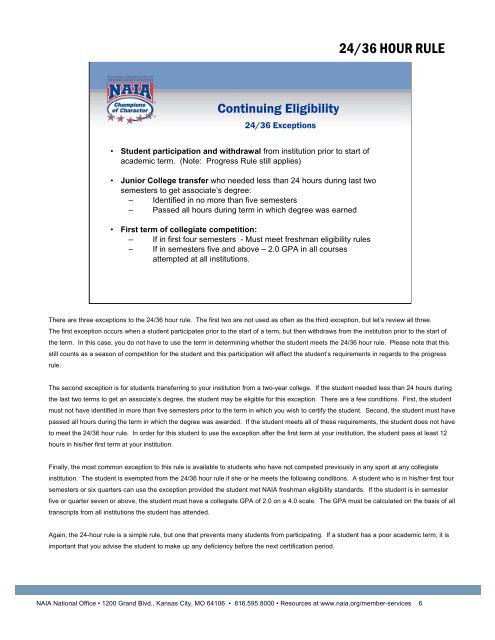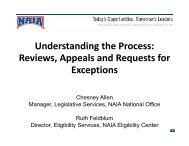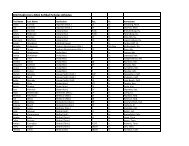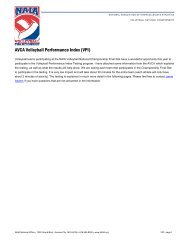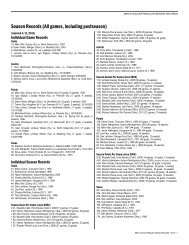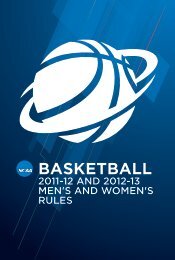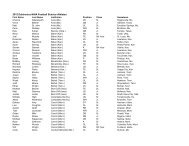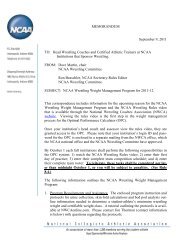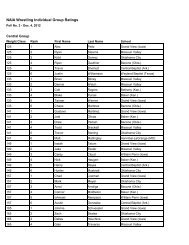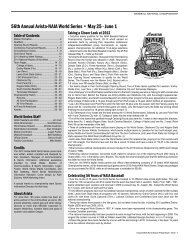24/36 Hour Rule - NAIA
24/36 Hour Rule - NAIA
24/36 Hour Rule - NAIA
Create successful ePaper yourself
Turn your PDF publications into a flip-book with our unique Google optimized e-Paper software.
Continuing Eligibility<br />
<strong>24</strong>/<strong>36</strong> Exceptions<br />
• Student participation and withdrawal from institution prior to start of<br />
academic term. (Note: Progress <strong>Rule</strong> still applies)<br />
• Junior College transfer who needed less than <strong>24</strong> hours during last two<br />
semesters to get associate’s degree:<br />
– Identified in no more than five semesters<br />
– Passed all hours during term in which degree was earned<br />
• First term of collegiate competition:<br />
– If in first four semesters - Must meet freshman eligibility rules<br />
– If in semesters five and above – 2.0 GPA in all courses<br />
attempted at all institutions.<br />
<strong>24</strong>/<strong>36</strong> HOUR RULE<br />
There are three exceptions to the <strong>24</strong>/<strong>36</strong> hour rule. The first two are not used as often as the third exception, but let’s review all three.<br />
The first exception occurs when a student participates prior to the start of a term, but then withdraws from the institution prior to the start of<br />
the term. In this case, you do not have to use the term in determining whether the student meets the <strong>24</strong>/<strong>36</strong> hour rule. Please note that this<br />
still counts as a season of competition for the student and this participation will affect the student’s requirements in regards to the progress<br />
rule.<br />
The second exception is for students transferring to your institution from a two-year college. If the student needed less than <strong>24</strong> hours during<br />
the last two terms to get an associate’s degree, the student may be eligible for this exception. There are a few conditions. First, the student<br />
must not have identified in more than five semesters prior to the term in which you wish to certify the student. Second, the student must have<br />
passed all hours during the term in which the degree was awarded. If the student meets all of these requirements, the student does not have<br />
to meet the <strong>24</strong>/<strong>36</strong> hour rule. In order for this student to use the exception after the first term at your institution, the student pass at least 12<br />
hours in his/her first term at your institution.<br />
Finally, the most common exception to this rule is available to students who have not competed previously in any sport at any collegiate<br />
institution. The student is exempted from the <strong>24</strong>/<strong>36</strong> hour rule if she or he meets the following conditions. A student who is in his/her first four<br />
semesters or six quarters can use the exception provided the student met <strong>NAIA</strong> freshman eligibility standards. If the student is in semester<br />
five or quarter seven or above, the student must have a collegiate GPA of 2.0 on a 4.0 scale. The GPA must be calculated on the basis of all<br />
transcripts from all institutions the student has attended.<br />
Again, the <strong>24</strong>-hour rule is a simple rule, but one that prevents many students from participating. If a student has a poor academic term, it is<br />
important that you advise the student to make up any deficiency before the next certification period.<br />
<strong>NAIA</strong> National Office • 1200 Grand Blvd., Kansas City, MO 64106 • 816.595.8000 • Resources at www.naia.org/member-services 6


